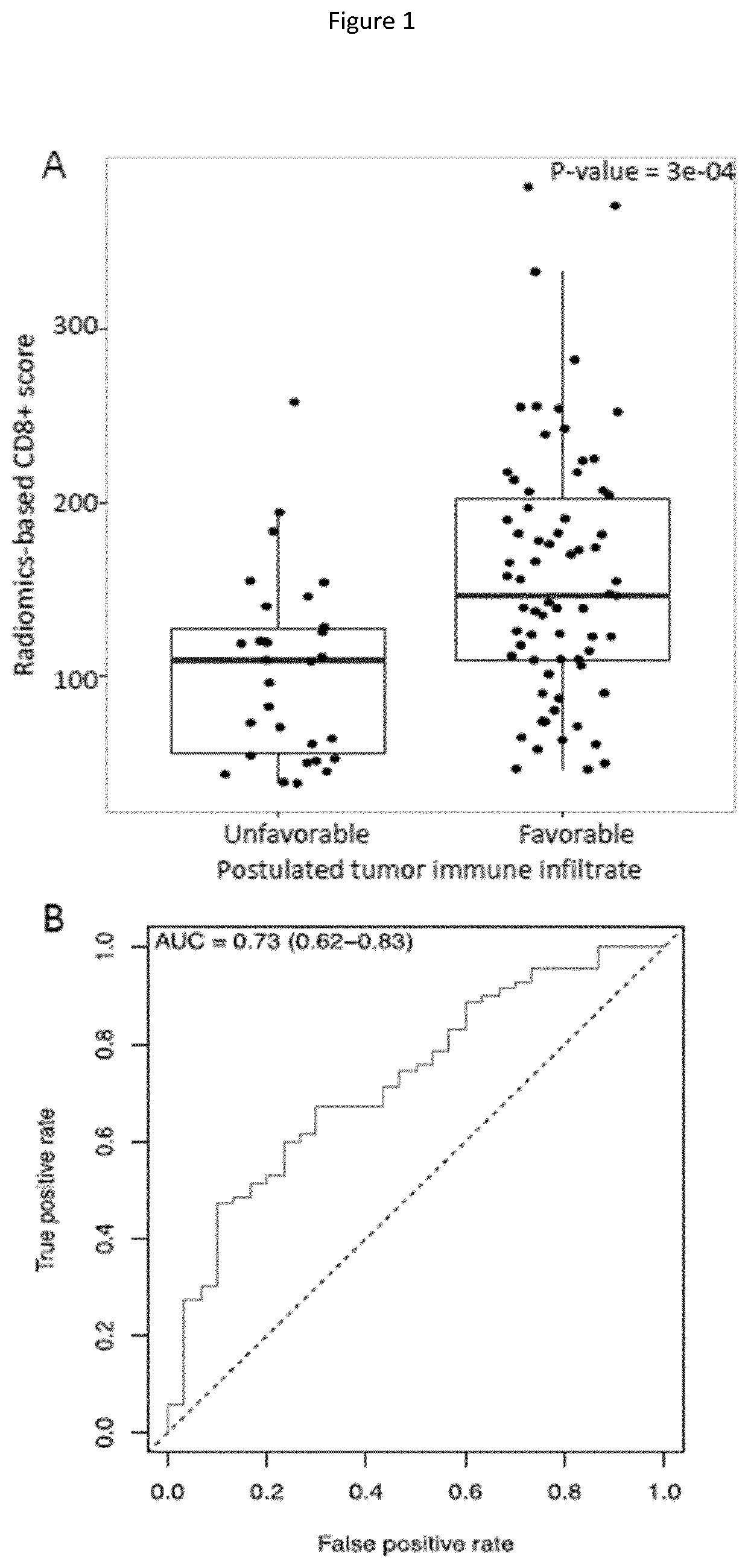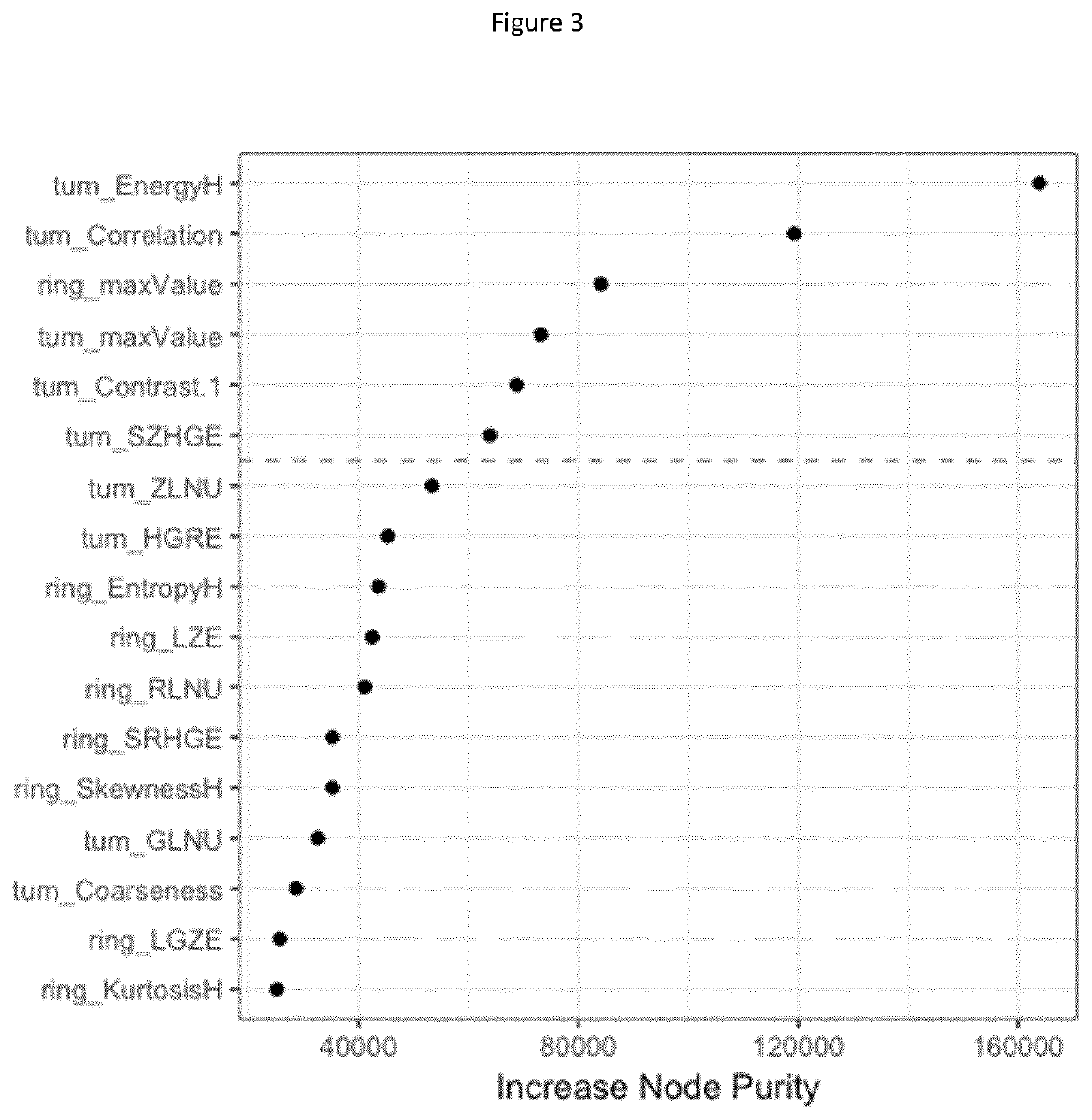A Radiomics-Based Imaging Tool to Monitor Tumor-Lymphocyte Infiltration and Outcome in Cancer Patients Treated by Anti-PD-1/PD-L1
- Summary
- Abstract
- Description
- Claims
- Application Information
AI Technical Summary
Benefits of technology
Problems solved by technology
Method used
Image
Examples
example 1
Contrast-Enhanced Computer Tomography (CT) Imaging of Head and Neck Carcinomas
[0154]Training Set
[0155]Clinical and imaging data of the head and neck squamous cell carcinoma cohort provided by The Cancer Imaging Archive (http: / / www.cancerimagingarchive.net / ) (TCIA-HNSC) were used [35, 36]. Baseline contrast-enhanced computer tomography (CT) imaging with slice-thickness equal to or less than 5 mm and acquired using 120 KVP were reviewed. After exclusion of patients who had only postoperative images or artifacts at the tumor level, no gantry-tilt (for technical compatibility of our texture imaging software), and no genomic data available, 57 patients were included.
[0156]Corresponding genomic data were obtained from The Cancer Genome Atlas (TCGA) portal (https: / / portal.udc.cancer.gov / ) and consisted of 20530 genes obtained with Illumina HiSeq RNASeqV2 (Illumina, San Diego, Calif., USA) and quantified using RPKM (Reads Per Kilobase Million) method. The population abundance of tissue-infi...
example 2
Contrast Enhanced CT-Based Radiomics Signature of Different Solid Tumors
[0183]Radiomic features were extracted from contrast-enhanced CTs of 135 patients with advanced solid malignant tumors from the prospective trial MOSCATO. For each patient, RNA-seq data were used to quantify CD8 T-cells. From 84 variables (78 radiomic features, 5 location variable, 1 technical variable), a radiomic-based predictor of CD8 T-cell expression was built using elastic-net. The primary objective was to confirm the relationship of this predictor with gene expression in an independent cohort of 119 patients from The Cancer Genome Atlas (TCGA). Two other independent cohorts of patients with solid tumors were used to evaluate this predictor: 100 patients with tumors assumed as either immune-inflamed (dense CD8 T-cell infiltration) or immune-desert (limited CD8 T-cell infiltration) to analyze the relevance with the immune-phenotype, and 137 patients treated with anti-PD-1 / PD-L1 monotherapy in phase 1 trials...
PUM
 Login to View More
Login to View More Abstract
Description
Claims
Application Information
 Login to View More
Login to View More - R&D
- Intellectual Property
- Life Sciences
- Materials
- Tech Scout
- Unparalleled Data Quality
- Higher Quality Content
- 60% Fewer Hallucinations
Browse by: Latest US Patents, China's latest patents, Technical Efficacy Thesaurus, Application Domain, Technology Topic, Popular Technical Reports.
© 2025 PatSnap. All rights reserved.Legal|Privacy policy|Modern Slavery Act Transparency Statement|Sitemap|About US| Contact US: help@patsnap.com



